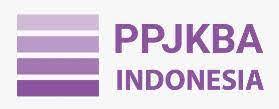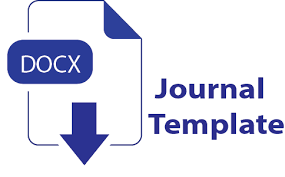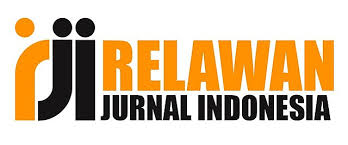Tracing Errors, Shaping Skills: An Analysis of Maharah al-Kitabah among Arabic Learners
DOI:
https://doi.org/10.58223/al-irfan.v8i1.420Keywords:
Analisis kesalahan, maharah al-kitabahAbstract
Writing skill (maharah al-kitabah) is one of the essential competencies in Arabic language learning; however, many students still struggle to master it effectively. This study investigates the writing errors made by students of class VIII.3 at MTsN 2 Makassar, with the primary aim of identifying the types of errors and analyzing the underlying causes behind them. Employing a qualitative descriptive approach with an error analysis framework, data were collected through writing tests and semi-structured interviews. The data were then analyzed using techniques of data reduction, data display, and conclusion drawing. The findings reveal that the majority of students continue to encounter significant difficulties in maharah al-kitabah. The types of errors most frequently observed include: improper spacing between words, confusion between similar-looking Arabic letters, misuse of punctuation, incorrect application of tasydid, and the omission or addition of letters within words. Furthermore, the causes of these errors can be classified into internal and external factors. Internal factors consist of limited writing practice, lack of concentration, hurried writing, restricted reading habits, insufficient understanding of Arabic grammar, and a limited vocabulary range. Meanwhile, external factors are associated with the teaching methods used, the broader learning environment, and the influence of parental support. This study contributes to the field of Arabic language education by providing an in-depth understanding of the error patterns in students’ writing. It also emphasizes the need for more targeted instructional strategies, greater emphasis on writing practice, and supportive learning environments to improve maharah al-kitabah among learners.
References
Anggraeni, S. W., & Alpian, Y. (2018). PENERAPAN METODE SUGESTOPEDIA UNTUK MENINGKATKAN KEMAMPUAN MENULIS PUISI SISWA KELAS V SEKOLAH DASAR. Jurnal Pendidikan Guru Sekolah Dasar, 5(2), 106–122.
Apriliyani, R., & Gazali, E. (2019). Pengaruh Penggunan Media Strip Story Untuk Meningkatkan Keterampilan Menulis dan Minat Siswa Pada Pembelajaran Bahasa Arab. Kampung Jurnal IAIN Syekh Nurjati Cirebon, 8(2), 104–122. https://core.ac.uk/download/pdf/270192573.pdf
Azizah, R. (2022). Permainan teka teki silang dalam pembelajaran bahasa Arab untuk meningkatkan maharah kitabab. Tatsqifiy: Jurnal Pendidikan Bahasa Arab, 3(2), 116–124. https://doi.org/10.30997/tjpba.v3i2.6119
Hamdy, M. Z., & Ningsih, W. P. (2022). Media Game Resident Evil 8 - Village dalam Pembelajaran Keterampilan Membaca dan Menulis. Al-Fathin: Jurnal Bahasa Dan Sastra Arab, 5(1), 104–124. https://doi.org/10.32332/al-fathin.v5i01.4037
Kawijaya, J. (2023). Penggunaan Artificial Intelligence Markup Language (AIML) Untuk Menganalisa Kesalahan Menulis Bahasa Arab di MTs Bilingual Batu. Jurnal Jendela Pendidikan, 3(03), 352–362. https://doi.org/10.57008/jjp.v3i03.569
Latief, M. A. (2018). Tanya jawab metode penelitian pembelajaran bahasa. UM Press.
Musgamy, A. (2017). Quantum Learning Sebagai Proses Pembelajaran Bahasa Arab Aktif, Inovatif, Kreatif, Efektif Dan Menyenangkan. Al Daulah : Jurnal Hukum Pidana Dan Ketatanegaraan, 6(1), 145–155. https://doi.org/10.24252/ad.v6i1.4871
Nufus, H. (2015). Pembelajaran Insya (Kitabah) dengan Media Strip Story. Jurnal Horizon Pendidikan, 10(2), 213–220. https://www.jurnal.iainambon.ac.id/index.php/hp/article/view/708
Qolbiyah, R. (2020). Permainan Teka Teki Silang Yosiap (Ayo Isi Aku Dengan Lengkap) Untuk Pembelajaran Menulis Pada Siswa Madrasah Ibtida’Iyah. Prosiding Semnasbama IV, 2, 147–160.
Rahmawati, R. D. (2020). Strategi Pembelajaran Menulis Bahasa Arab Untuk Mahasiswa Program Studi Bahasa Inggris. Jurnal Education and Development, 8(3), 55–68. https://doi.org/https://doi.org/10.37081/ed.v8i3.1902
Rasyidi, A. W. (2012). Memahami Konsep Dasar Pembelajaran Bahasa Arab. UIN Maliki Press.
Saniyah, A. (2015). Penerapan strategi mind mapping untuk meningkatkan keterampilan menulis bahasa Arab siswa kelas X-IPA 1 Madrasah Aliyah Negeri 3 Malang oleh Azzah Saniyyah [UNIVERSITA NEGERI MALANG (UM)]. http://library.um.ac.id/ptk/index.php?mod=detail&id=72518
Sugiyono. (2018). Metode Penelitian Kuantitatif, Kualitatif dan R & D. ALFABETA.
Syahid, A. (2020). Penerapan Model Pembelajaran Kooperatif Tipe Word Square untuk Meningkatkan Hasil Belajar. Jurnal Pendidikan Dan Pembelajaran, 1(1).
Thu’aimah, R. A. (1989). Ta’lim al-Arabiyyah li Ghairi an-Natiqiina biha: Manahijuhu wa Asalibuhu. Dar al-Fikr al-Arabiy.
Ulum, M. (2019). Istiraatijiyaatu Ta’limi Maharati al-Kitabah fi Markazi Tarqiyati al-Lughah al-Arabiyyah. IJATL, 03(01).
Wirdalinda, W. (2019). Pengaruh Penggunaan Metode Sugestopedia Terhadap Keterampilan Menulis Cerpen Siswa Kelas X Ipa Sma Negeri 1 Kecamatan Lareh Sago Halaban Kabupaten Lima Puluh Kota. Menara Ilmu, 13(5), 212–221.
Downloads
Published
How to Cite
Issue
Section
License
Copyright (c) 2025 Sukri Wagola, Abdul Qahar Zainal, Akhmad Syahid

This work is licensed under a Creative Commons Attribution 4.0 International License.
Lisensi :
Al-Irfan: Journal of Arabic Literature and Islamic Studies is published under conditions Creative Commons Attribution 4.0 International License / CC BY 4.0 This license permits anyone to copy and redistribute this material in any form or format, modify, modify, and make derivative works of this material for any purpose, including commercial purposes, so long as they credit the author for the original work.











